April 18, 2025 | 14:28 GMT +7
April 18, 2025 | 14:28 GMT +7
Hotline: 0913.378.918
April 18, 2025 | 14:28 GMT +7
Hotline: 0913.378.918
Starting from the beginning of 2022, Quang Binh Sub-Department of Fisheries has implemented support for the marine farming model using HDPE plastic cages in Quang Dong commune, Quang Trach district, Quang Binh.
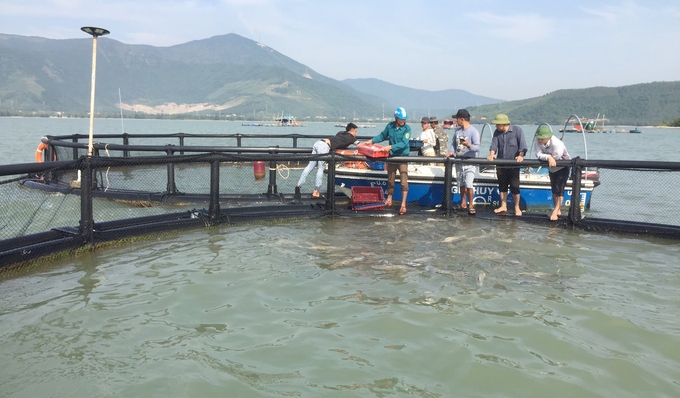
Cobia farming area in Quang Dong commune, Quang Trach district. Photo: T.P.
Mr. Le Ngoc Linh, Director of Quang Binh Sub-Department of Fisheries commented: “The cobia farming model strictly follows the Norwegian cage technology. This is considered the latest and most modern marine cage technology to adapt to climate change. Farmers can raise fish in offshore areas with cages that can withstand high winds and strong waves, as well as minimize damage when storms and floods occur. Households participating in the marine fish farming model are supported with 50% of costs for HDPE cages, seeds, food in addition to 100% of management costs in accordance with regulations.
Quang Binh Sub-Department of Fisheries has assigned technical officers to participate in the model. Technical officers are assigned on a monthly basis to direct the inspection model, guide the technical process of raising and examine the quality, feed, materials and equipment as well as the growth rate of cobia. Mr. Vo Van Binh, a technical officer under Quang Binh Sub-Department of Fisheries assigned to participate in the model, said that the cobia seed is purchased at Khanh Ha Fishery Investment, Service and Trading Co., Ltd. in Vinh Hai commune, Nha Trang, Khanh Hoa province. “When stocking fish, the seed is measured at approximately 25 to 30 cm per fish. The number of seed stocked is 1,500 fish per cage and the stocking density must be 3 fish per cubic meter", Mr. Binh added.
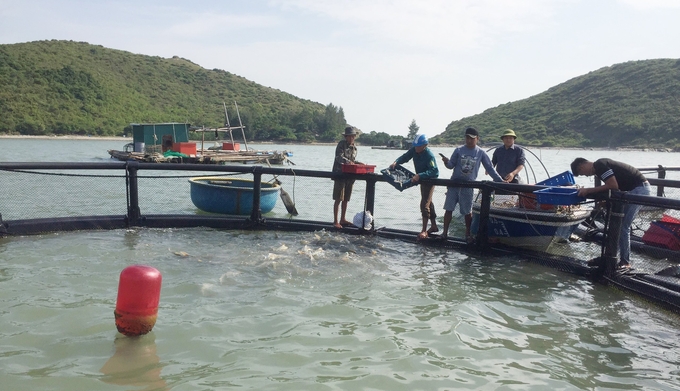
The first model of marine fish farming using HDPE plastic cages can open up a new direction for marine farming in Quang Binh. Photo: T.P.
The cobia farming process has yielded a better growth and development rate compared to the approved plan. After 4 months of farming, some of the farmed fish have exceeded the size as expected in the approved plan. Mr. Cao Minh Thai, a farmer participating in the model in Quang Dong commune, Quang Trach district, Quang Binh said that the feed consists mainly of sea fish bought from fishermen so the cobia grow very quickly. “After discovering that some fish have exceeded the expected size and reached a commercial size of over 3.5 kg/fish, I asked the Sub-Department of Fisheries to collect and trim the overgrown cobia so we can earn early income. Thereby preventing the large cobia from overtaking the school in the cage and compete for food with the smaller fish, which will consequently slow their growth process", Mr. Thai shared.
Mr. Cao Minh Thai and Mr. Tuong Van Thinh visit the farming area daily to feed the fish, check their growth, development and examine the safety of the cages. After 6 months of farming, the cobia developed well with no disease and they are ready for harvest. According to Mr. Tuong Van Thinh, the harvest output of both farming households is estimated at over 10.2 tons of fish. “The average weight of a harvested fish is estimated at 3.5 to 4kg. The average selling price is 200,000 VND/kg, and the revenue is over 2 billion VND. After deducting the cost of labor, seeds, food, and materials, each family can earn a profit of nearly 150 million VND. The income for future farming seasons will be greater because there is no need to pay for cages and rafts", Mr. Thinh shared. After hearing the news of the cobia harvest, many traders visited to place large quantities orders on the spot. "We are also worried that there is not enough fish to sell to traders", said Mr. Thinh in joy.
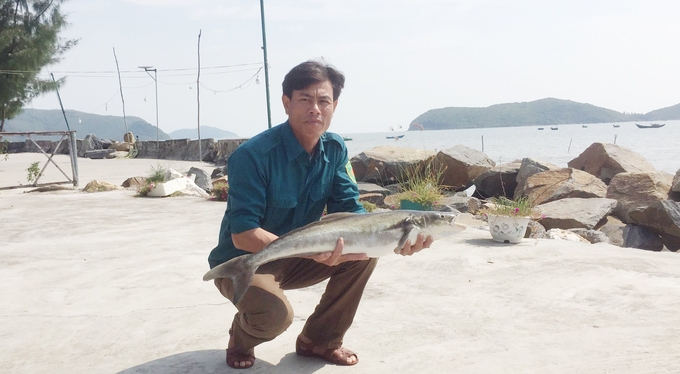
Cobia has a weight of nearly 5 kg, earning high-income for farmers. Photo: T.P.
The effective cobia marine farming model has created employment opportunities for the local people, for farmers, traders and collectors of marine fish. Mr. Vo Van Binh acknowledged that: “The model not only creates jobs but also a significant source of income for farmers. On the other hand, it is possible to create premium products with high selling prices, meeting great demand and a large consumption market."
For the immediate future, Quang Binh's Agriculture and Rural Development sector will continue to direct and encourage farmers to expand the model as well as include the model in the marine aquaculture development planning. Mr. Le Ngoc Linh, Head of Quang Binh Sub-Department of Fisheries, said that: “The model has diversified farming objects and farming methods to serve the needs of commercial farming in the province. Thereby, the potential of marine aquaculture development in the coastal waters of Quang Binh province is utilized".
Translated by Nguyen Hai Long
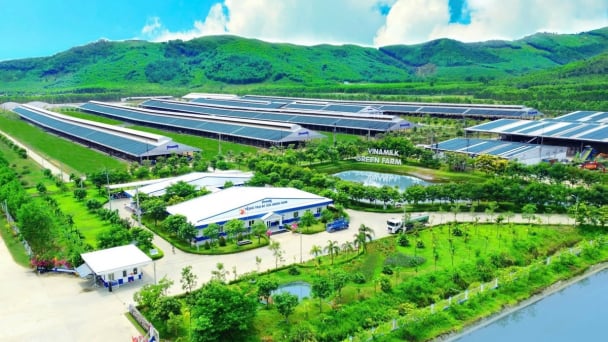
(VAN) Le Hoang Minh, representing Vinamilk, shared the company's experience in energy saving and green energy transition for production at a workshop held during the P4G Summit.
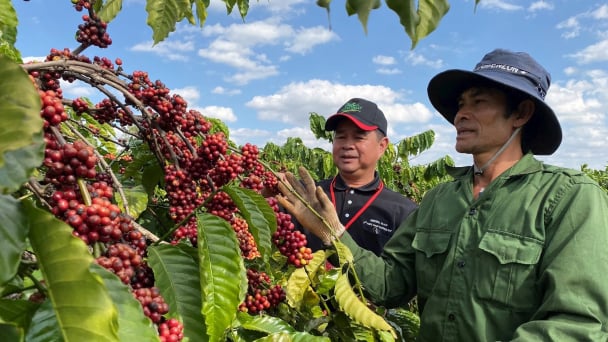
(VAN) Businesses emphasize fairness and equality when integrating social factors into their sustainable development strategies.
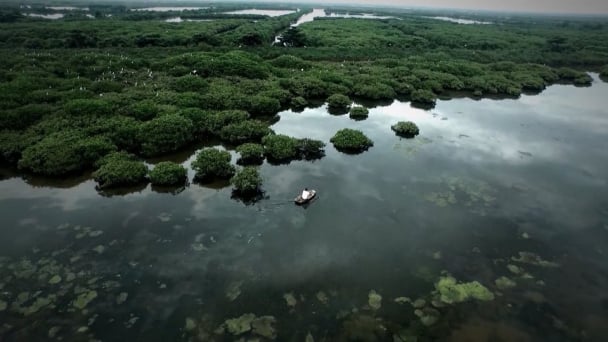
(VAN) French organizations and enterprises propose that Thai Binh province provide potential and long-term cooperation contents related to climate change response and green industrial development.
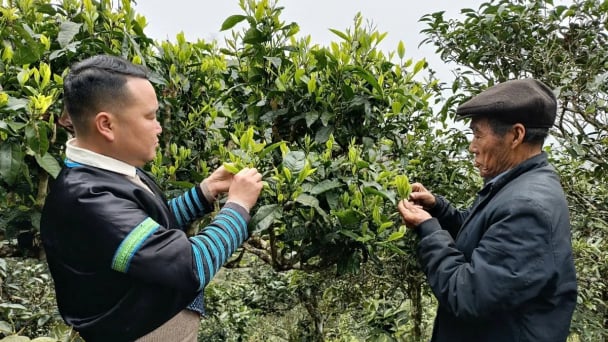
(VAN) Shan Tuyet tea is considered a 'heavenly treasure'. The H'mong people allow the tea to grow naturally, adhering to organic production principles, with the aim of exporting the product.
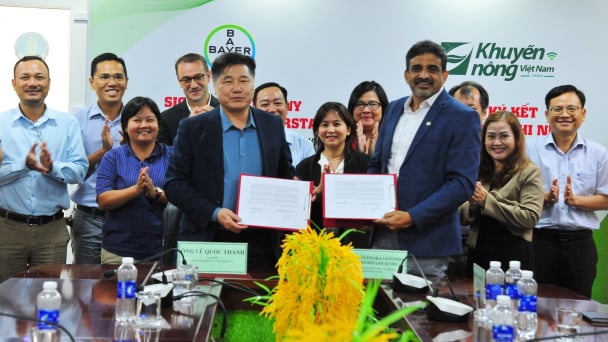
(VAN) Bayer Vietnam and the National Agricultural Extension Center have signed a partnership agreement to expand the development of effective and safe farming models for rice, durian, and coffee.
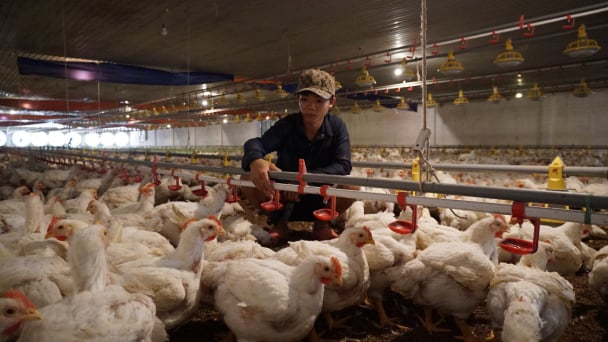
(VAN) Tay Ninh province possesses all the favorable conditions, from natural advantages to geographic location and social harmony, to drive economic development, particularly in attracting investment and advancing modern livestock farming.
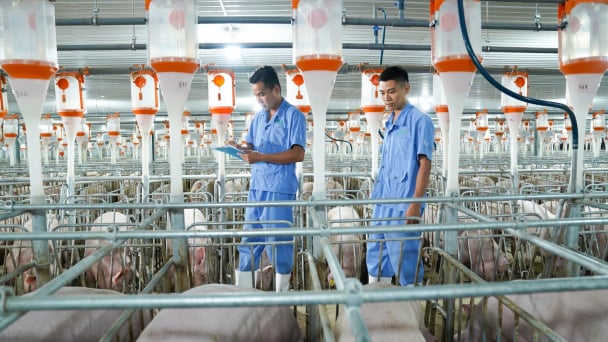
(VAN) Notably, every link in BAF's entire closed livestock value chain Feed - Farm - Food has received international certification.